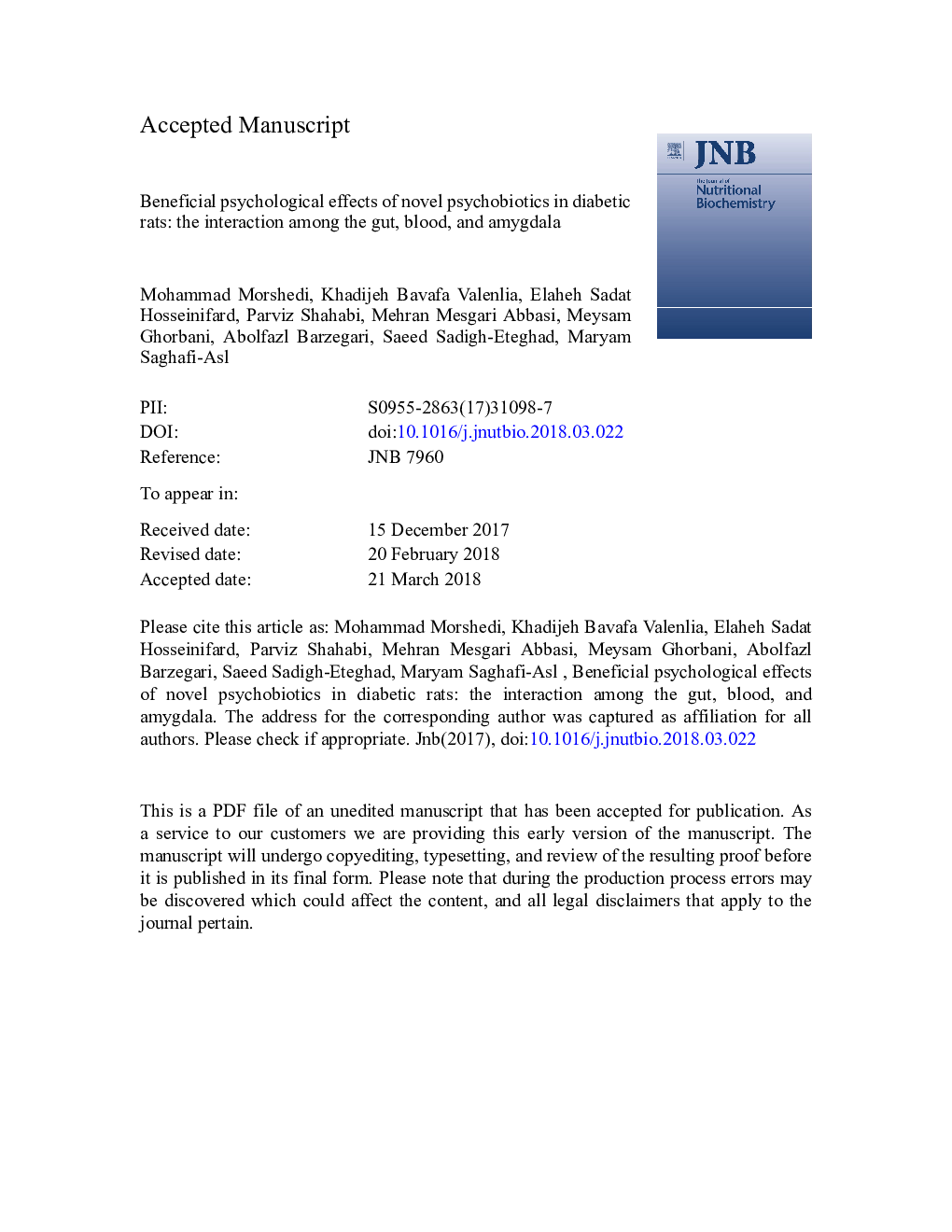| Article ID | Journal | Published Year | Pages | File Type |
|---|---|---|---|---|
| 8336346 | The Journal of Nutritional Biochemistry | 2018 | 26 Pages |
Abstract
Type 2 diabetes mellitus (T2DM) can lead to major complications such as psychiatric disorders which include depressive and anxiety-like behaviors. The association of the gut-brain axis in the development of such disorders, especially in T2DM, has been elucidated; however, gut dysbiosis is also reported in patients with T2DM. Hence, the regulation of the gut-brain axis, in particular, the gut-amygdala, as a vital region for the regulation of behavior is essential. Thirty-five male Wistar rats were divided into six groups. To induce T2DM, treatment groups received high-fat diet and 35 mg/kg streptozotocin. Then, supplements of Lactobacillus plantarum, inulin or their combination were administered to each group for 8 weeks. Finally, the rats were sacrificed for measurement of blood and tissue parameters after behavioral testing. The findings demonstrated the favorable effects of the psychobiotics (L. plantarum, inulin or their combination) on oxidative markers of the blood and amygdala (superoxide dismutase, glutathione peroxidase, malondialdehyde and total antioxidant capacity), as well as on concentrations of amygdala serotonin and brain-derived neurotrophic factor, in the diabetic rats. In addition, beneficial effects were observed on the elevated plus maze and forced swimming tests with no change in locomotor activity of the rats. There was a strong correlation between the blood and amygdala oxidative markers, insulin and fasting blood sugar with depressive and anxiety-like behaviors. Our results identified L. plantarum ATCC 8014 and inulin or their combination as novel psychobiotics that could improve the systemic and nervous antioxidant status and improve amygdala performance and beneficial psychotropic effects.
Keywords
TACMDAT2DMSTZFSTHFDEPMLPSGPXCATBDNFForced swimming teststreptozotocinelevated plus mazeOatType 2 diabetes mellitushigh-fat dietSODSuperoxide dismutaseTotal antioxidant capacityBrain-derived neurotrophic factorLipopolysaccharidesmalondialdehydeInsulin resistanceHPAhypothalamus–pituitary–adrenalglutathione peroxidase
Related Topics
Life Sciences
Biochemistry, Genetics and Molecular Biology
Biochemistry
Authors
Mohammad Morshedi, Khadijeh Bavafa Valenlia, Elaheh Sadat Hosseinifard, Parviz Shahabi, Mehran Mesgari Abbasi, Meysam Ghorbani, Abolfazl Barzegari, Saeed Sadigh-Eteghad, Maryam Saghafi-Asl,
